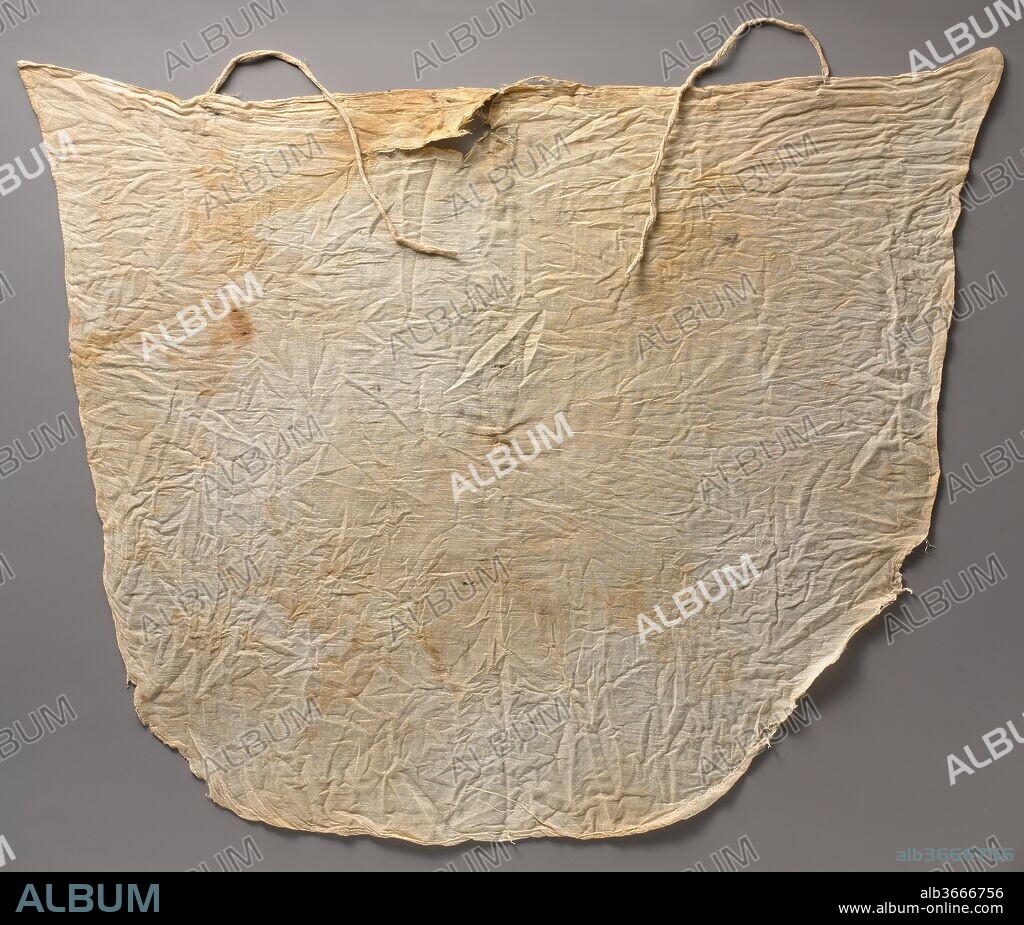alb3666756
Kerchief from Tutankhamun's Embalming Cache

|
Zu einem anderen Lightbox hinzufügen |
|
Zu einem anderen Lightbox hinzufügen |



Haben Sie bereits ein Konto? Anmelden
Sie haben kein Konto? Registrieren
Dieses Bild kaufen
Titel:
Kerchief from Tutankhamun's Embalming Cache
Untertitel:
Siehe automatische Übersetzung
Kerchief from Tutankhamun's Embalming Cache. Dimensions: L. 51 cm (20 1/16 in.); W. 66 cm (26 in.). Dynasty: Dynasty 18. Reign: reign of Tutankhamun. Date: ca. 1336-1327 B.C..
In December 1907 Theodore M. Davis, a wealthy American who was funding excavations in the Valley of the Kings, discovered a small pit near the tomb of Seti I. Inside the pit were approximately a dozen large sealed whitewashed storage jars (09.184.1). Among other things, the jars contained bags of natron (a kind of salt), pieces of linen with hieratic inscriptions dated to Years 6 and 8 of a king named Tutankhamun (throne name Nebkheperure). At the time, almost nothing was know about Tutankhamun, and Davis declared that he had discovered the king's tomb.
Davis received a number of the jars and their contents in the division of finds and, in 1909, he gave most of his share to the Metropolitan Museum. It was only later that Herbert Winlock, the field director of the Museum's excavations at Thebes, realized that the natron and linen were embalming refuse from the mummification of Tutankhamun.
Worn linen sheets and clothing were used for wrapping and padding mummies. Linens that weren't actually used for mummification were sometimes buried in embalming caches. Three mended and laundered head cloths (09.184.217-.219) found in Tutankhamun's embalming cache were originally identified as kerchiefs worn by guests at the king's funerary meal. We now believe that they were part of the leftover embalming linen. This blue kerchief, dyed with indigo, is quite small and may have belonged to Tutankhamun when he was a child. Whether it was worn by Tutankhamun or not, examples of dyed linen from ancient Egyptian times are extremely rare, making this a very precious object. Two of the kerchiefs were made for adults (09.184.218, .219); the third is child-size (09.184.217).
Technik/Material:
linen
Zeitraum:
NEW KINGDOM
Museum:
Metropolitan Museum of Art, New York, USA
Bildnachweis:
Album / Metropolitan Museum of Art, NY
Freigaben (Releases):
Model: Nein - Eigentum: Nein
Rechtefragen?
Rechtefragen?
Bildgröße:
4200 x 3577 px | 43.0 MB
Druckgröße:
35.6 x 30.3 cm | 14.0 x 11.9 in (300 dpi)
 Pinterest
Pinterest Twitter
Twitter Facebook
Facebook Link kopieren
Link kopieren Email
Email
